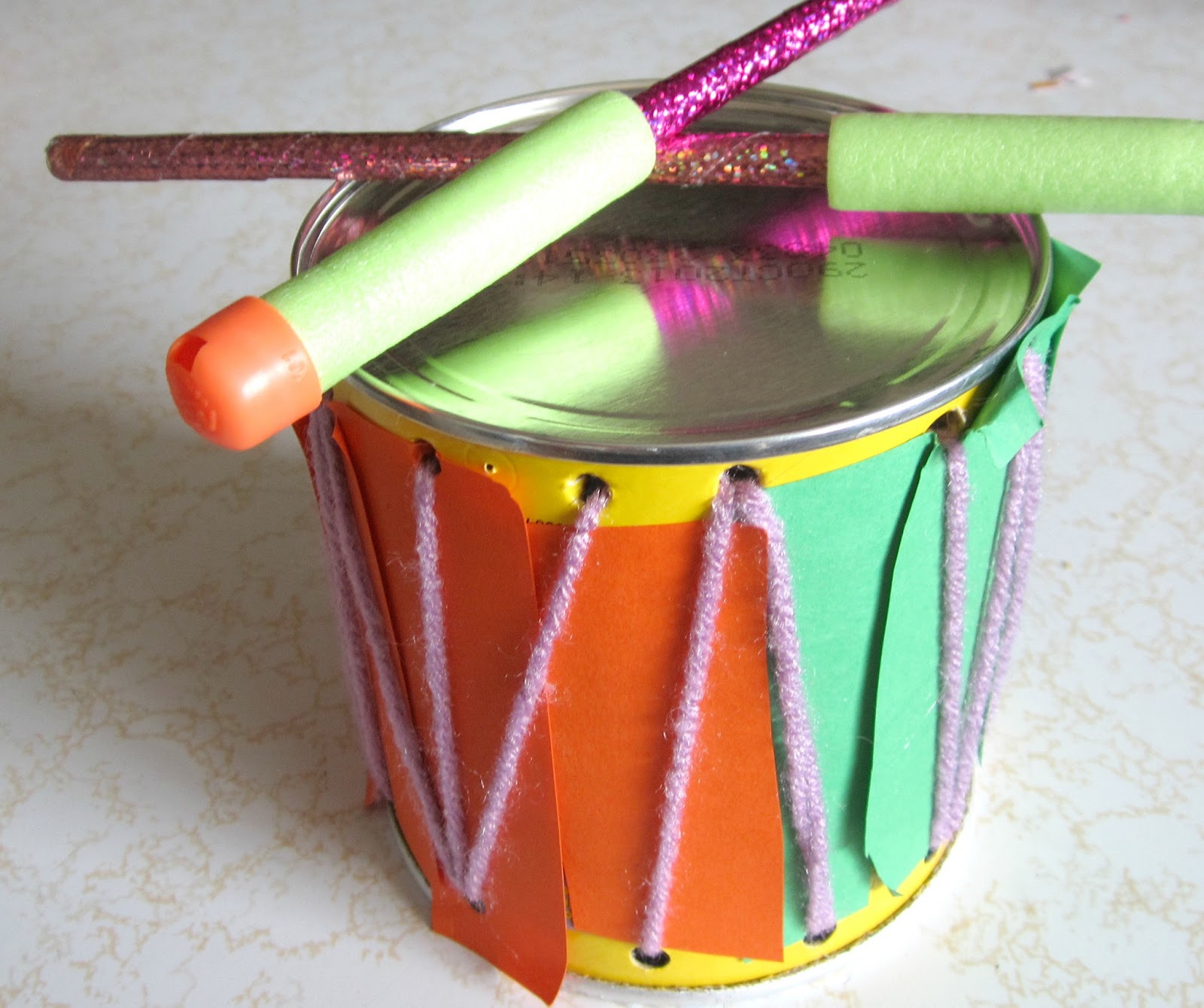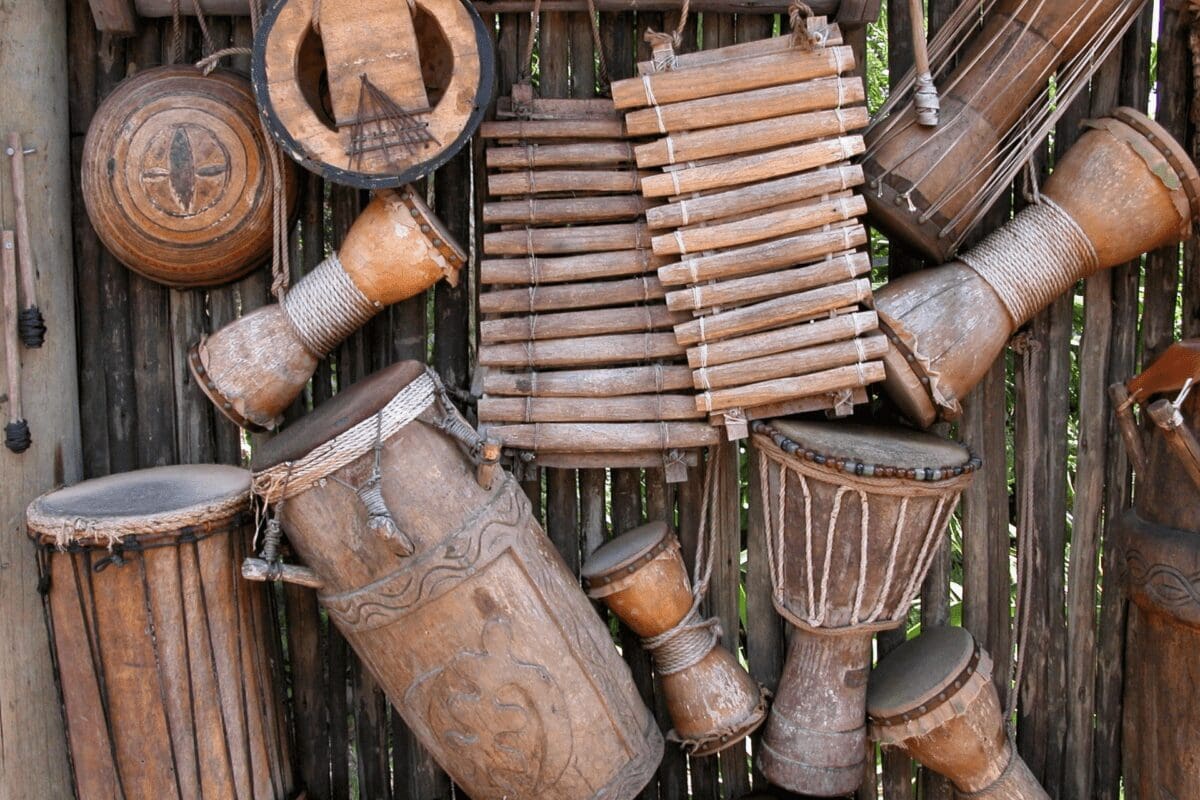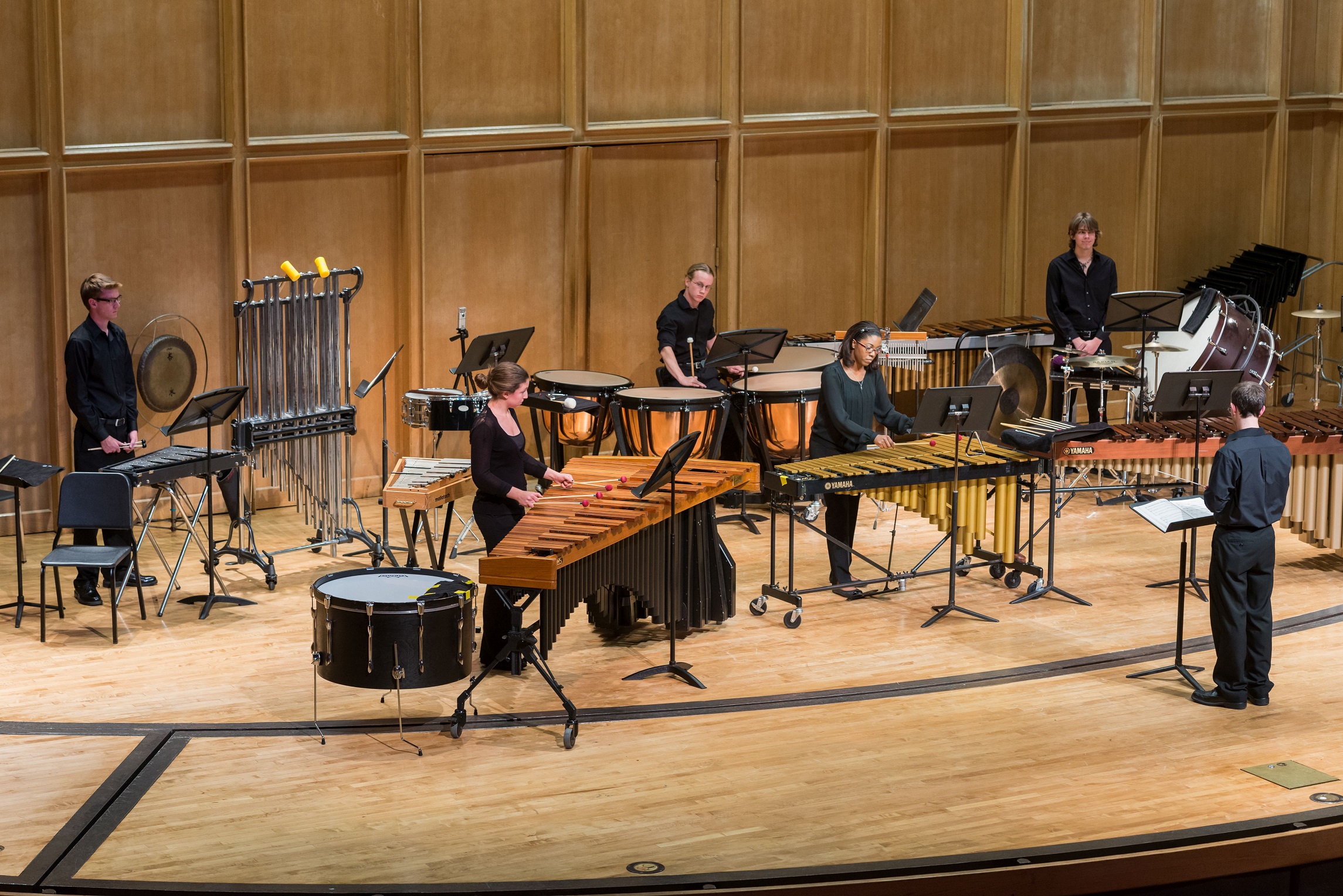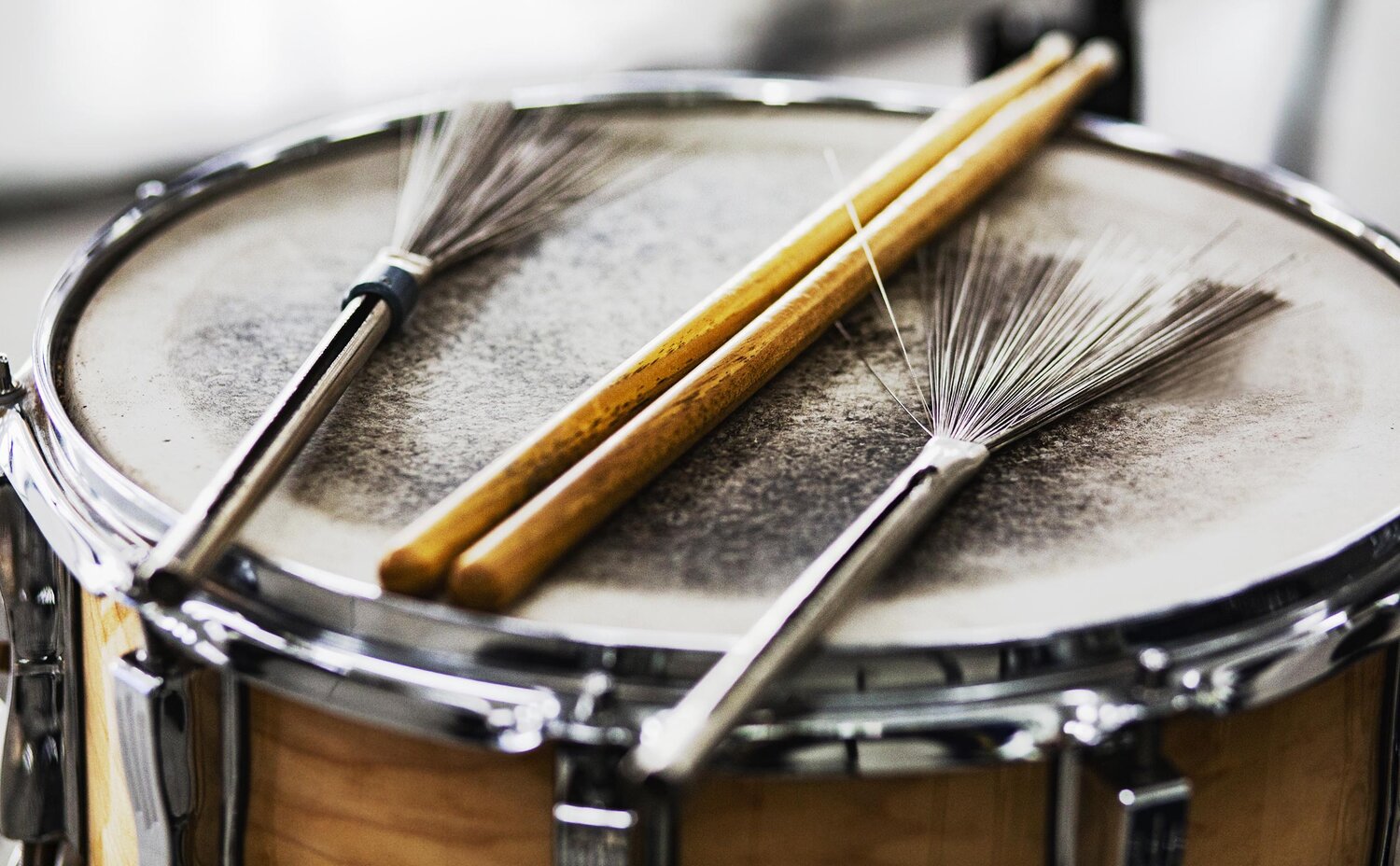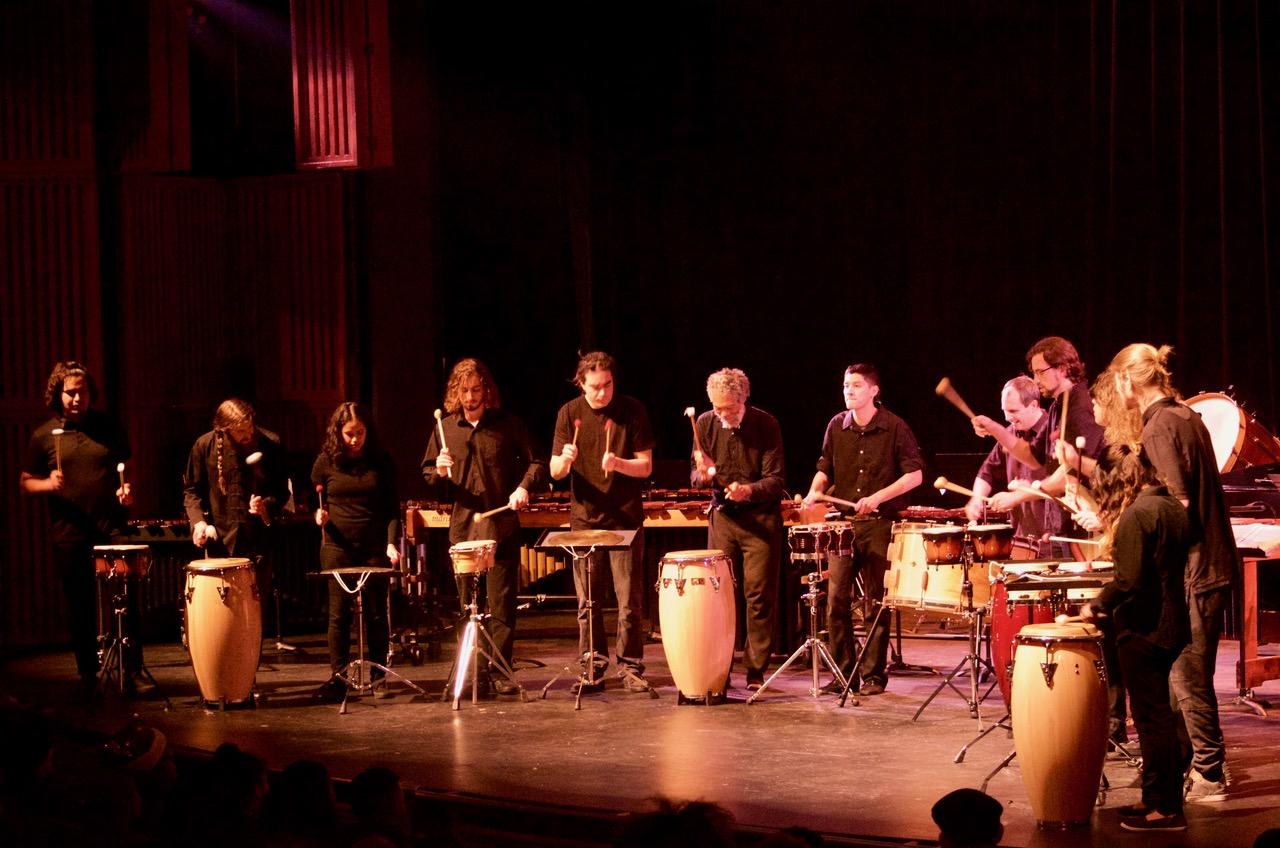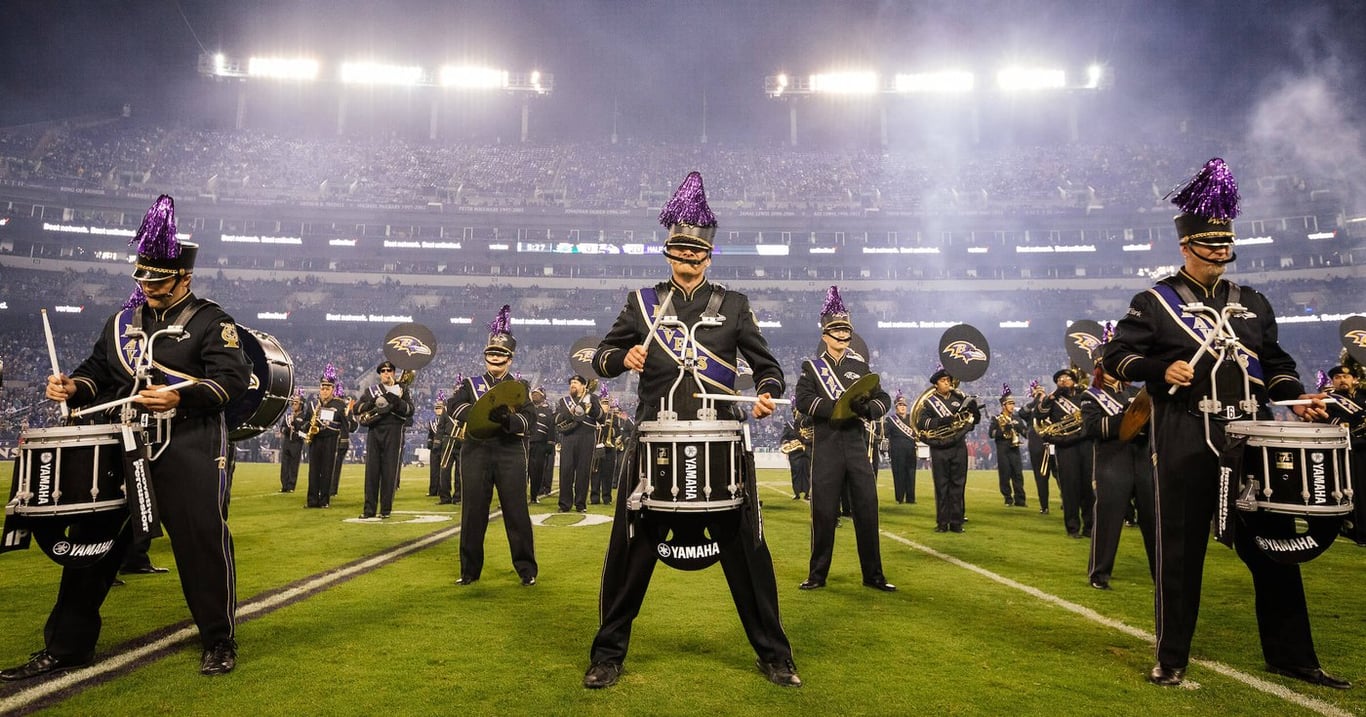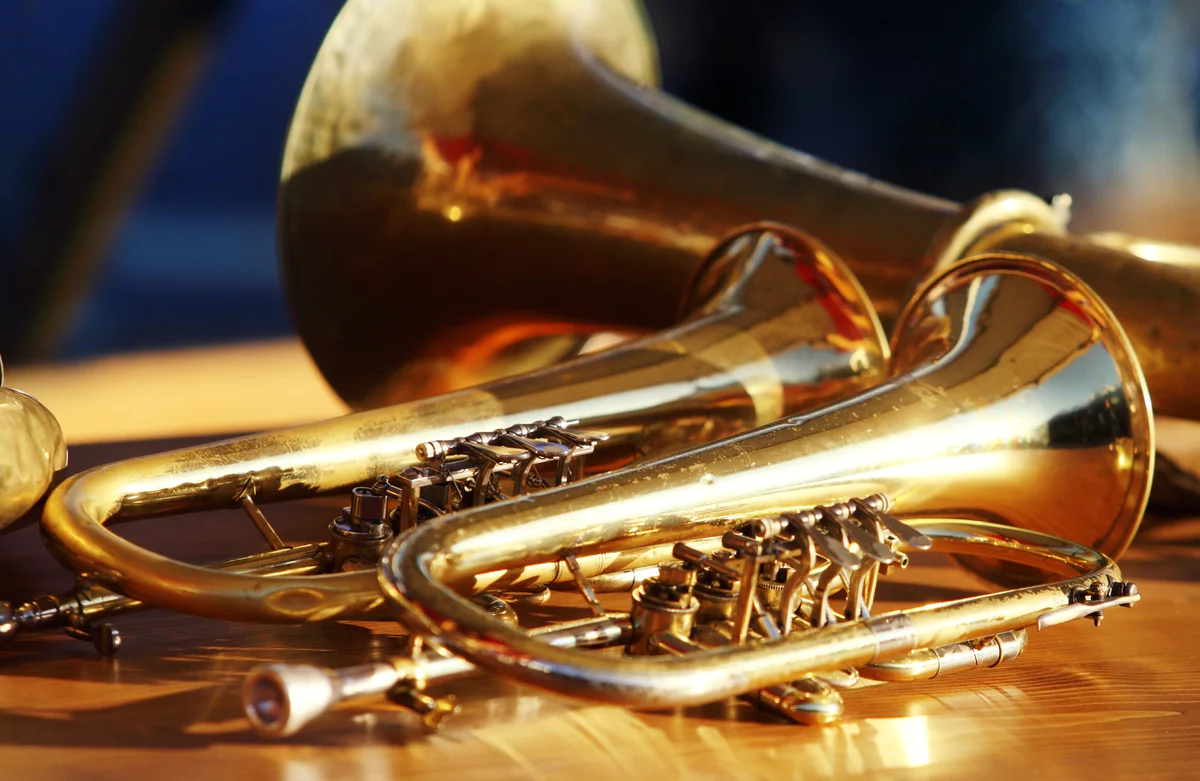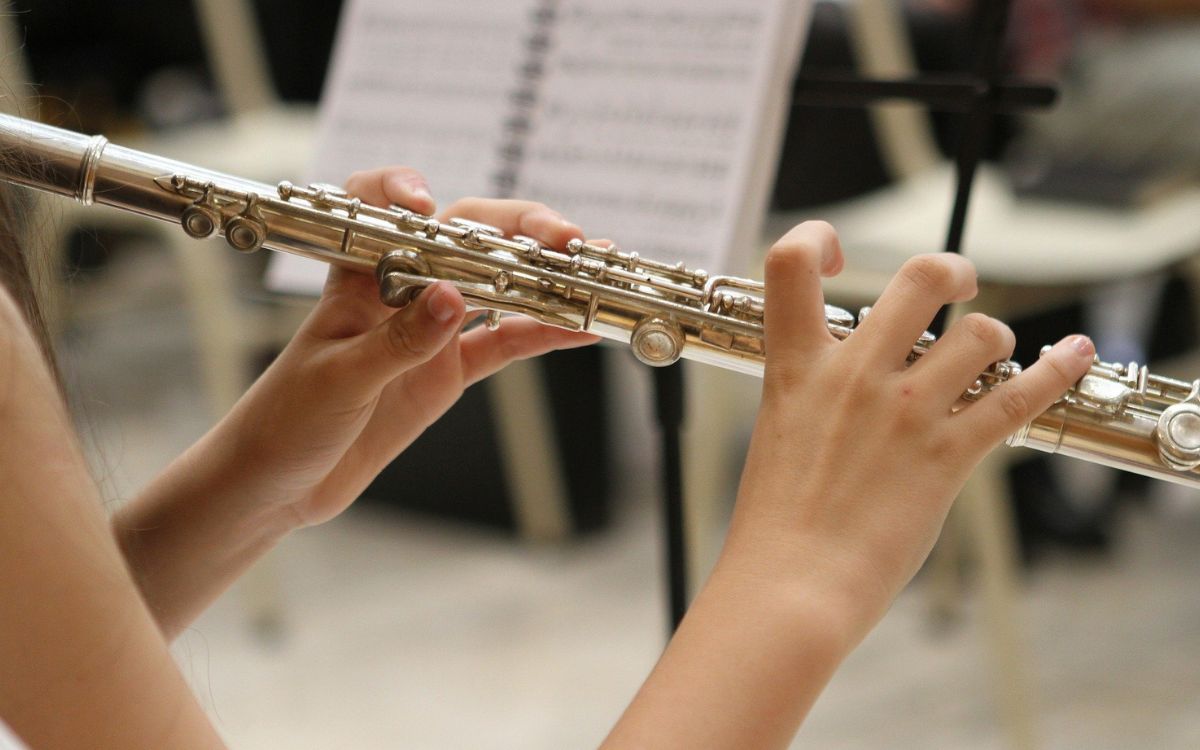Home>Instruments>Percussion Instruments>How Percussion Instruments Work


Percussion Instruments
How Percussion Instruments Work
Modified: January 22, 2024
Discover the inner workings of percussion instruments and learn how they create rhythm and sound. Explore the fascinating world of percussion instruments from drums, cymbals, and tambourines to xylophones and marimbas.
(Many of the links in this article redirect to a specific reviewed product. Your purchase of these products through affiliate links helps to generate commission for AudioLover.com, at no extra cost. Learn more)
Table of Contents
Introduction
Percussion instruments form a vital part of musical ensembles and have been used by civilizations across the globe for centuries. From the primal beats of drums to the delicate chimes of cymbals, these instruments add rhythm, texture, and excitement to music in various genres, including classical, jazz, rock, and world music. By producing sound through striking or shaking, percussion instruments create a diverse range of tones and effects.
Whether it’s the thunderous bass drum leading an orchestra or the intricate patterns of a tambourine in a folk band, percussion instruments provide a foundation for musical compositions and performances. Their unique qualities and versatility make them an essential part of any ensemble or solo performance.
In this article, we will explore the fascinating world of percussion instruments. We will delve into the different types of percussion instruments, dissect their components, uncover how they produce sound, and discuss popular playing techniques. Additionally, we will provide insights on maintaining and caring for these instruments, as well as highlight some famous percussion instruments that have left a significant mark on musical history.
So, whether you’re a music lover, aspiring drummer, or curious enthusiast, join us as we embark on a rhythmic journey to understand the captivating world of percussion instruments.
Types of Percussion Instruments
The world of percussion instruments is incredibly diverse, encompassing a wide array of instruments from various cultures and musical traditions. These instruments can be classified into several categories based on their construction, playing technique, and cultural origin. Here are some of the most common types of percussion instruments:
- Drums: Drums are one of the oldest and most iconic percussion instruments. They typically consist of a hollow shell, a drumhead made of animal skin or synthetic material, and tension rods to adjust the pitch. Examples of drums include the bass drum, snare drum, tom-toms, and conga drums.
- Cymbals: Cymbals are metallic percussion instruments that produce a bright, ringing sound when struck together or with drumsticks. They come in various sizes and shapes, including crash cymbals, ride cymbals, and hi-hats.
- Timpani: Also known as kettle drums, timpani are large, bowl-shaped drums with a foot pedal mechanism to change the pitch. They are commonly found in orchestras and provide a deep, resonant sound.
- Hand Drums: Hand drums are played with bare hands and come in different shapes and sizes. Examples include the djembe from West Africa, the bongos from Latin America, and the tabla from India.
- Shakers: Shakers are small percussion instruments that produce sound when shaken. They can be made of different materials such as seeds, beads, or metal. Examples include maracas, egg shakers, and rainsticks.
- Mallet Instruments: Mallet instruments are played by striking them with mallets or beaters. Examples include the vibraphone, marimba, and xylophone.
- Gongs: Gongs are large, flat metal discs that produce a deep, resonating sound when struck. They are commonly used in Asian music traditions, particularly in ceremonial and spiritual contexts.
- Tuned Percussion: Tuned percussion instruments are pitched instruments that can be played melodically. Examples include the glockenspiel, chimes, and tubular bells.
These are just a few examples of the vast range of percussion instruments available. Each instrument has its unique sound and role in different musical styles and cultural contexts. Whether it’s the thundering power of a bass drum or the delicate shimmer of a cymbal, percussion instruments add depth and character to the world of music.
Components of Percussion Instruments
Percussion instruments may vary in their design and construction, but they all share similar fundamental components. Understanding these components can deepen our appreciation for the intricate mechanics behind each instrument’s sound production. Here are the essential components of percussion instruments:
- Shell: The shell is the main body of the percussion instrument. It provides the structure and resonance necessary for producing sound. Shells can be made of various materials, including wood, metal, or synthetic materials.
- Head: The head is the surface that is struck to produce sound. It is commonly made of animal skin, synthetic materials, or a combination of both. The thickness and tension of the head greatly influence the instrument’s sound and response.
- Rim: The rim, also known as the hoop, is the metal or wooden hoop that secures the head to the shell of the instrument. It helps maintain the tension of the head and provides a surface to strike or play rimshots.
- Tension rods: Tension rods are threaded metal rods that run through the rim and control the tension of the head. By tightening or loosening the tension rods, the player can adjust the pitch and tone of the instrument.
- Strainer: This component is specific to instruments like snare drums and allows for the adjustment of the snare wires that give these drums their distinctive “buzzing” sound.
- Resonator: In some instruments, such as timpani or mallet instruments, there may be additional components that contribute to the sound production. These can include resonators, which amplify and enhance the instrument’s sound by providing a space for the sound to resonate.
- Mounting hardware: Many percussion instruments, such as cymbals and tom-toms, require mounting hardware to attach them securely to stands or other percussion setups. This hardware ensures stability and allows for easy positioning during play.
These components work together in harmony, allowing percussion instruments to produce a wide range of sounds and tonal characteristics. The careful selection and combination of these components contribute to the uniqueness and versatility of each instrument.
It is important to note that while percussion instruments share common components, variations in design and materials can greatly affect the instrument’s sound and playing experience. From the resonance of the shell to the response of the head, each component plays a crucial role in shaping the overall sound of the instrument.
How Sound is Produced
The production of sound in percussion instruments involves the conversion of mechanical energy into audible vibrations. The specific mechanism varies depending on the type of percussion instrument, but the fundamental principle remains the same. Here’s how sound is produced in percussion instruments:
1. Striking: In most percussion instruments, sound is produced by striking the instrument’s surface, such as the drumhead or cymbal. When the player applies force to the surface, it vibrates, creating sound waves that travel through the air. The pitch and volume of the sound can be manipulated by varying the intensity, velocity, and location of the strike.
2. Shaking: Instruments like shakers or tambourines create sound through shaking or rattling. The movement of the objects inside the instrument causes them to collide, producing vibrations that generate sound waves. The shaking technique allows for a rapid and continuous production of sound.
3. Scraping or Rubbing: Some percussion instruments, such as the guiro or washboard, produce sound through scraping or rubbing motions. By running a stick or another object along a textured surface, friction is created, resulting in vibrations that produce sound. The speed and pressure of the rubbing motion can affect the pitch and timbre of the sound.
4. Resonance: Resonance is an important factor in percussion instruments that have resonating chambers or hollow bodies, such as drums or mallet instruments. When the instrument is struck, the initial impact creates vibrations that resonate within the body of the instrument. This amplifies and sustains the sound, giving it depth and richness.
It’s important to note that the materials used in the construction of percussion instruments also play a significant role in sound production. The density, thickness, and composition of the materials, such as the drumhead or cymbal alloys, can impact the tone, sustain, and timbre of the instrument.
Overall, percussion instruments provide a fascinating interplay of energy, vibrations, and resonance to create the diverse array of sounds we hear. Whether it’s the thunderous impact of a bass drum or the delicate shimmer of a tambourine, understanding how sound is produced enhances our appreciation for the artistry and craftsmanship behind these captivating instruments.
Playing Techniques
Percussion instruments offer a wide range of playing techniques, each contributing to the unique sound and expressive possibilities of the instrument. Here are some of the commonly used playing techniques in percussion:
- Striking: Striking is the most basic and widely used playing technique for percussion instruments. It involves hitting the instrument’s surface with drumsticks, mallets, or hands to produce a sound. The angle, force, and location of the strike can greatly affect the tone, articulation, and volume of the sound produced.
- Rolling: Rolling is a technique used on instruments like drums and cymbals to create a continuous sound. By rapidly and repeatedly striking the surface, the player achieves a sustained roll or tremolo effect.
- Brushing: Brushing is commonly used on snare drums or cymbals to produce a softer and more delicate sound. It involves using drum brushes with bristles instead of drumsticks, creating a swishing or whisper-like effect.
- Shaking: Shaking is a technique used on instruments like shakers, maracas, or tambourines. It involves holding the instrument in one hand and creating rhythmic motions to make the objects inside collide and produce sound.
- Scraping: Scraping is a technique used on instruments with textured surfaces, such as the guiro or washboard. By using a stick or another object, the player scrapes the surface to generate a unique, raspy sound.
- Muffling: Muffling is a technique used to control the sustain and resonance of percussion instruments. It involves using dampening materials, such as felt or tape, to partially or completely muffle the sound produced by the instrument. This technique is frequently used on drums to achieve different tonal qualities and dynamics.
- Glissando: Glissando is a technique used on mallet instruments, such as the marimba or xylophone, to create a smooth and continuous sliding effect between two notes. It involves holding the mallet and sliding it across the bars or keys to produce a seamless transition.
- Mallet Techniques: Mallet instruments, like the vibraphone or glockenspiel, have their own set of specialized techniques. These include techniques such as double stops (playing two notes simultaneously), tremolo (rapidly repeating a single note), and dead strokes (muffling the sound by immediately stopping the vibrations).
These are just a few examples of the various playing techniques used in percussion. Each instrument has its unique set of techniques that allow for expressive playing and a wide range of sonic possibilities. By mastering these techniques, percussionists can unlock the full potential of their instruments and create captivating rhythmic patterns and melodies.
Maintenance and Care
Proper maintenance and care are essential for keeping percussion instruments in optimal condition, ensuring longevity, and preserving their sound quality. Here are some important tips for maintaining and caring for percussion instruments:
- Regular Cleaning: It’s important to regularly clean percussion instruments to remove dust, dirt, and oils that can affect their appearance and sound. Use a soft cloth or mild cleaning solution appropriate for the instrument’s materials. Be cautious not to use harsh chemicals or abrasive materials that can damage the instrument.
- Tuning and Adjustment: For instruments with adjustable tension, such as drums or timpani, tune them regularly to maintain proper pitch and tonal quality. Check and tighten any loose hardware, such as screws or tension rods, to ensure stability and optimal performance.
- Storage: When not in use, store percussion instruments in a safe and suitable environment. Protect them from extreme temperatures, humidity, and direct sunlight, as these can warp or damage the instrument’s materials. Use protective cases or bags to prevent scratches and impact during transportation.
- Head and Cymbal Care: The heads of drums and cymbals can wear out over time. Replace them when necessary to maintain a consistent sound quality. Avoid excessive force when striking the instruments to prevent premature wear and damage.
- Stick Care: Take care of your drumsticks, mallets, and brushes. Avoid excessive force or striking hard surfaces that can cause them to crack or break. Clean your sticks and mallets regularly to remove dirt and oils that can affect their grip and performance.
- Snare and Wire Maintenance: For instruments with snare wires, such as snare drums, regularly clean and adjust the snare mechanism to ensure proper response and sensitivity. Replace snare wires when they become worn out or damaged.
- Professional Servicing: For intricate repairs or adjustments, seek the assistance of a professional instrument technician or luthier. They have the expertise to handle complex repairs, replacements, and adjustments that can significantly improve the instrument’s performance.
- Proper Handling: Handle percussion instruments with care and avoid unnecessary impacts or drops. When setting up or dismantling setups, use caution to prevent any damage to the instrument or its components.
By following these maintenance and care guidelines, you can preserve the sound quality, appearance, and functionality of your percussion instruments. Regular upkeep and attention to detail will ensure that your instruments are ready to deliver their best performance whenever you play them.
Famous Percussion Instruments
Throughout history, certain percussion instruments have captivated audiences and left an indelible mark on the world of music. These instruments have been featured prominently in iconic compositions and performances. Here are a few famous percussion instruments that have made a significant impact:
- Timpani: The timpani, or kettle drums, are often associated with the grandeur and power of orchestral music. These large, bowl-shaped drums provide a deep and resonant sound that adds a dramatic element to symphonies and concertos. Famous composers like Ludwig van Beethoven and Igor Stravinsky have incorporated timpani prominently in their compositions.
- Snare Drum: The snare drum is a versatile instrument that finds its place in various genres, from orchestral music to marching bands. Its distinctive “crack” and crisp sound make it an essential component of military and ceremonial music. In jazz music, master drummers like Buddy Rich and Gene Krupa showcased the snare drum’s dynamic capabilities through their virtuosic performances.
- Marimba: The marimba is a xylophone-like instrument with a rich and warm tone. Originating from African and Latin American cultures, it has gained popularity in contemporary music genres like jazz, world music, and even as a solo instrument in classical compositions. Famous marimba players like Keiko Abe and Evelyn Glennie have pushed the boundaries of the instrument’s capabilities through their exceptional performances.
- Djembe: The djembe is a traditional West African drum that has become a symbol of African rhythm and culture. Its unique combination of bass tones, slaps, and pops offers a wide range of expressive possibilities. The djembe has gained popularity worldwide and is frequently used in drum circles, performances, and cultural events.
- Steel Pan: The steel pan, also known as the steel drum, originated in Trinidad and Tobago and is synonymous with Caribbean music. The instrument is made from repurposed oil drums and produces melodic and vibrant sounds. Its joyful and infectious rhythms have made it a staple in Caribbean music festivals and calypso music.
- Tambourine: The tambourine is a small handheld instrument that adds a rhythmic element to music. Its jingling metal discs and striking surface create a bright and lively sound. The tambourine is a popular percussion instrument in various genres, including folk, rock, and even classical music, where it is often used to add a touch of color and texture.
These instruments represent a mere fraction of the multitude of famous percussion instruments that have influenced music throughout the ages. Each instrument has its own unique sound and cultural significance, leaving an indelible impact on the musical landscape. From the commanding presence of the timpani to the delicate tones of the marimba, these instruments continue to inspire musicians and audiences alike.
Conclusion
Percussion instruments play an integral role in the world of music, providing rhythm, texture, and excitement to compositions and performances. From the thunderous beats of drums to the delicate chimes of cymbals, these instruments span cultures, genres, and traditions, showcasing the diversity and power of percussive sound.
In this article, we have explored the vast world of percussion instruments, from their types and components to the mechanics of sound production and playing techniques. We have also discussed the importance of proper maintenance and care to ensure the longevity and optimal performance of these instruments.
Famous percussion instruments like timpani, snare drums, marimbas, and steel pans have left an indelible mark on the musical landscape and continue to inspire musicians worldwide. Their unique sounds and cultural significance contribute to the rich tapestry of music from different regions and genres.
Whether you’re a percussionist, a music lover, or simply curious about the world of instruments, understanding the fascinating intricacies of percussion instruments enhances our appreciation for the artistry and craftsmanship behind them. From orchestral symphonies to energetic jazz ensembles, percussion instruments provide the rhythmic foundation that moves us and stirs emotions.
So, the next time you tap your feet to a catchy beat or find yourself awe-struck by the power of a drum solo, remember the incredible range of sounds and techniques that make percussion instruments an integral part of the musical landscape.
Embark on your rhythmic journey, explore the diverse world of percussion instruments, and let the captivating realm of percussive sound ignite your imagination and passion for music.

